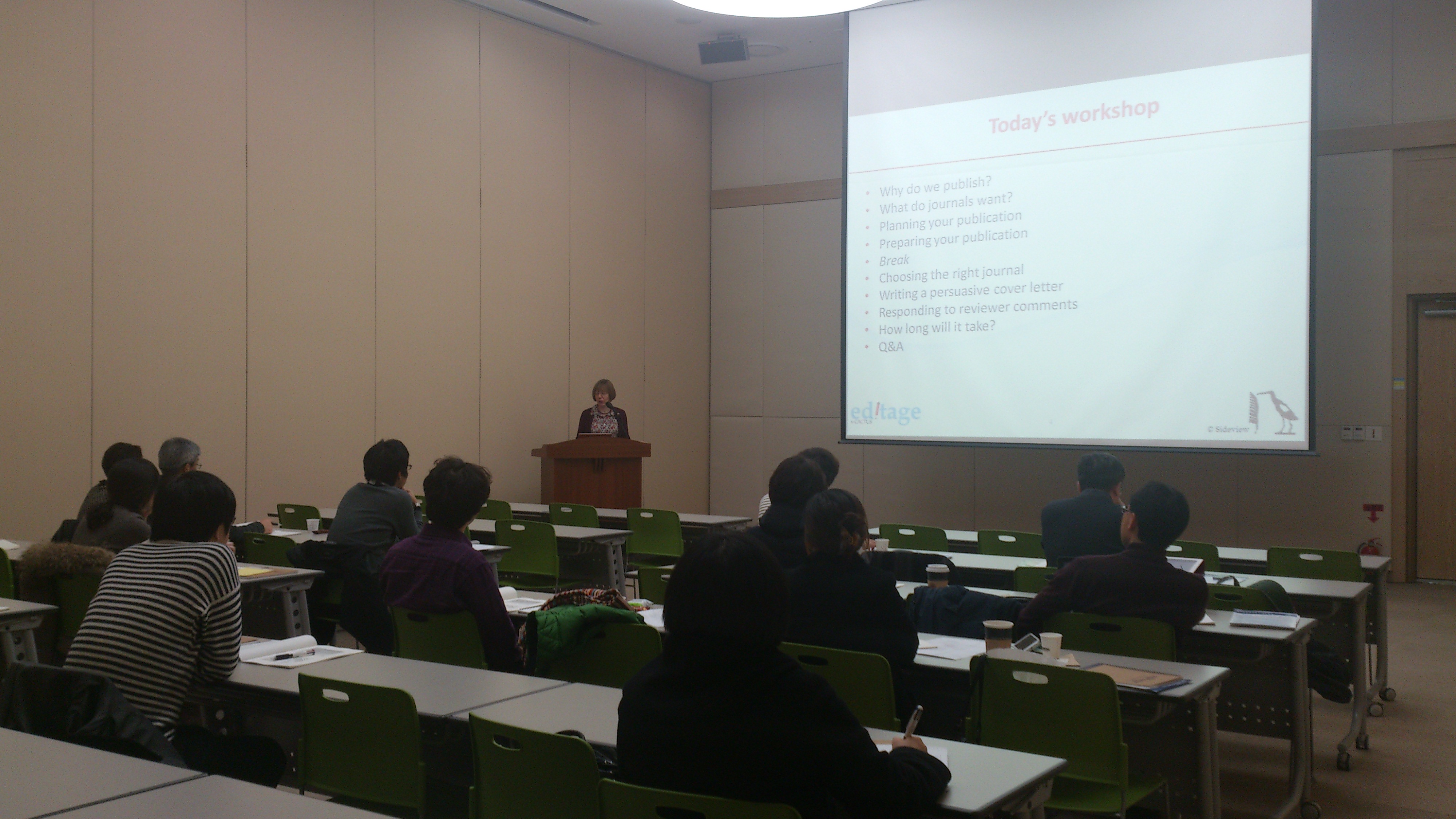Workshop: Understand peer review to increase chances of acceptance

Understand peer review to increase your chances of acceptance
Highlights from the Korea workshop series led by Dr. Elizabeth Wager in January 2014
In January 2014, Editage organized a series of workshops for researchers and journal editors at various locations in Japan and Korea. The workshops were conducted by experienced editor, medical writer, publications consultant, and trainer--Dr. Elizabeth Wager. These workshops were attended by over 300 researchers and journal editors. This was part of the workshop series in Korea.
This was a practical half-day seminar organized by Editage and held over two days; it was held in Seoul on January 11, 2014 and in Busan on January 12, 2014. In this session, Dr. Wager spoke about the following points:
- The need for researchers to get published
![Workshop led by Dr. Wager in Busan -]()
- The players in the peer review process
- Information on what journals want
- How to plan and prepare a publication
- Choosing the right journal
- Writing a persuasive cover letter
- Responding to peer review comments
She first introduced the different players in the publication process—funders, authors, other contributors, reviewers, journal editors, technical editors, and readers. She emphasized that it was important to keep everybody happy. She went on to discuss what journals really want and to stress on this point she quoted a few important journals.
“We seek to publish high-quality clinical trials that will alter medical practice.”—The Lancet
“The aim of the Lancet Oncology is to publish interesting, informative, and practice-changing articles on any topic connected with clinical oncology.”—The Lancet Oncology
“The criteria for selection are scientific excellence, originality, and interest across disciplines within the physical sciences. To be acceptable for publication a paper should represent a significant advance in its field, rather than something incremental.”—Proceedings of the Royal Society (Series A)
However, she said that some journals like PLOS One have very different criteria for acceptance. Another interesting aspect she discussed in this session was the importance of each publication having a clear key message. She said that many people find it difficult to summarize the key points of their work even after they have drafted the entire manuscript. She illustrated a unique way to help participants arrive at their key message. She told them to think about how they would describe their findings
· To a friend in a café
· As a newspaper headline
· In a tweet (140 characters)
In this session, among other things, Dr. Wager discussed possible outcomes of submission—(1) outright rejection, (2) conditional acceptance, (3) acceptance with minor revisions, and (4) acceptance with no changes. She suggested that if the paper is rejected, the author needs to check the reasons for rejection and decide whether to re-submit to the same journal or not.
She suggested that authors should probably re-submit to the same journal in the following cases.
- The manuscript was rejected because it was too long
- Missing information can be added
- Data can be re-analyzed
- Parts that were misinterpreted can be corrected
- Additional research can be done
- Overall comments were encouraging
However, she suggested that authors should consider re-submitting elsewhere if
- The manuscript was rejected outright
- The overall comments were not encouraging
- There were problems in the study design
- The data requested is not available
- The authors disagree with the reviewers’ comments
- The authors do not have the time to modify the paper based on the suggestions
Dr. Wager also discussed the factors affecting the time to publish. Some of these factors include the type of review, the number of reviewers, the time to reject, the kind of revisions requested, the re-review, the time from acceptance to publication (known as the lead time), and electronic versus paper publication.
Through this workshop, participants could understand the peer review process and how these different factors, if considered, could help increase their chances of publication.
See our upcoming workshops and webinars here. If you would like us to conduct a workshop/webinar for your organization, please contact us at authorhelp@editage.com.




View Comments